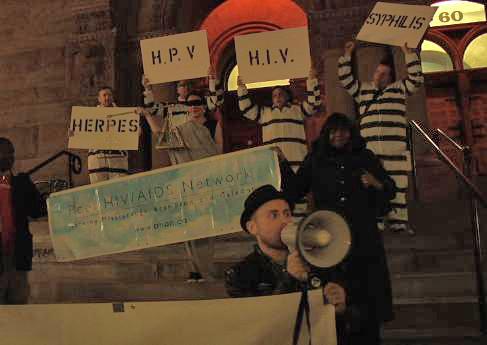The McGuinty government tabled its first budget since returning to power in a minority parliament last fall, and in an effort to tame the province’s spiralling debt and $16-billion deficit, the government is making sweeping cuts to public sector wages, supports for the poor, and culture and infrastructure grants.
Part of the government’s move to contain costs includes a freeze on Ontario Works (welfare) rates and the Ontario Disability Support Program, which will affect many Ontarians living with HIV/AIDS who rely on assistance during periods when they’re too sick to work.
While these benefit rates are not being cut, because the cost of rent, food and other necessities tends to rise with inflation, recipients will effectively lose purchasing power while the rate is frozen.
Activists have long called for these programs to be reformed instead so that they wouldn’t penalize recipients who can work in reduced capacity. At present, if recipients receive any income, their benefits are clawed back, reducing the incentive to work.
The budget will also eliminate the community start-up and maintenance benefit, which helps welfare recipients with emergency housing expenses. Half of the budget allocated to this program is being redirected to a broader program that is accessible to all low-income Ontarians.
The budget also moves to cap health-related discretionary benefits for welfare recipients, such as grants for eyeglasses or funerals.
“For a person living with HIV/AIDS on ODSP and struggling with poverty, it’s going to be a real challenge,” says Murray Jose, executive director of the Toronto People with AIDS Foundation. “There’s no question it’s going to have a real impact and it’s going to be a struggle to live in a manner that supports them and meets basic needs.”
Jose also laments that the government hasn’t investigated the option of reforming the system to allow recipients to work part-time while receiving benefits, as activists have been calling for.
“Looking at some of those recommendations and implementing them as part of this budget would have been nice to see,” he says.
However, Jose says that the budget plan may help people dealing with acute health problems because of reallocated health funding for community programs.
“In reducing some funds to hospitals, they’ve put it toward community programming to actually support people if they can get out of the hospital. Some of our partner agencies deal with that for people living with HIV,” he says.
One of those partner agencies is Casey House, which was also spared bad news in the budget. While several hospital construction projects were cut or curtailed in the budget, it appears that a previously announced grant of up to $29 million to expand Casey House into a centre of excellence for treatment of HIV will not be cut.
Funding for other important services queer people rely on appears to be stable.
The province is also not delisting any services from OHIP or catastrophic drug coverage from the Trillium Drug Program. However, the budget does envision the introduction of an income-tested deductable for high-income seniors who currently receive their prescription medication under the Ontario Drug Benefit.
Queer Ontarians may also be concerned about proposed cuts to seven cultural attractions and Toronto’s Luminato festival. The affected attractions are the Royal Ontario Museum, the Art Gallery of Ontario, the McMichael Canadian Art Collection, the Ontario Heritage Trust, the Ontario Science Centre, the Royal Botanical Gardens and Science North, and the cuts total $8.2 million over three years.
In order for the budget to pass, the Liberal Party needs at least two opposition members to vote with the government or abstain. The Progressive Conservatives have already indicated that they’ll be voting against the budget, leaving the government’s fate in the hands of the NDP.


 Why you can trust Xtra
Why you can trust Xtra


